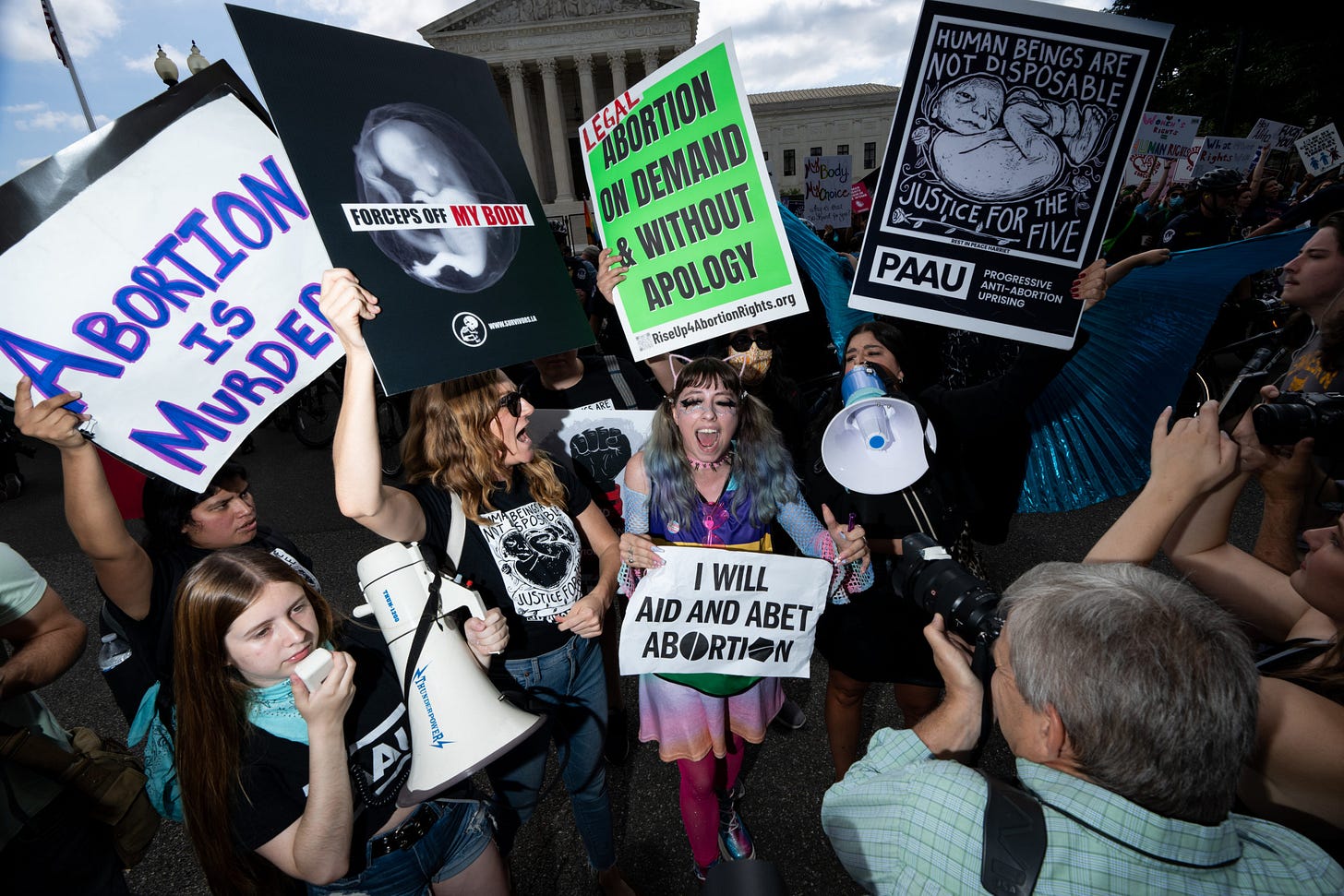So You’ve Ended <i>Roe</i>. How Are You Going to Support Women and Babies?
Building a culture of life in America is going to require more than abortion bans.

People much better educated than I am will be able to argue over the constitutional and legal questions presented by today’s Supreme Court ruling overturning Roe v. Wade. From my perspective, bringing an end to an objectively radical abortion regime is welcome. We’ve played fast and loose with this aspect of human dignity for too long; doing so has left lasting social and political scars and seared the conscience of the nation. I do not rejoice in the end of Roe, but neither do I regret it.
The Dobbs ruling brings to a close the era in which abortion policy was imposed at the national level by judicial fiat, and it begins a new era in which abortion policy will be shaped mainly by the work of state legislatures and governors. It is bound to be a wild ride. The polarized political age we live in was created and shaped, in no small part, by the Roe decision, and the animosities generated by it have seeped into every corner of public life. As Chief Justice John Roberts said in his concurrence, “This is a serious jolt to the legal system”—and not just the legal system but to our politics and the administrative state as well. Elected officials—local, county, state, and federal—who have let the Court take the heat on this issue for fifty years now face a reckoning: They must determine how to fashion an abortion policy based on the conflicted consensus that actually exists, which calls for abortion to be far less common but still remain legally available under certain circumstances.
This will be difficult, messy, and contentious work—the kind our political class, grown used to symbolic politics channeled through social media, is badly out of practice in performing. Abandoning women experiencing unexpected or undesired pregnancies to a world in which they can neither get an abortion nor find adequate social supports for pregnancy and childbearing invites, and deserves, significant political consequences. Which is to say, for the pro-life movement, the long-desired overturning of Roe does not mark an end point. To create a true culture of life, there is still much more work to be done.
With the constitutional issue now decided, at least for some time, we must turn to questions of policy: As a society with broad, shared agreement on the foundational importance of human dignity, how do we begin creating policies that offer true welcome to mothers and the children who arrive on society’s doorstep unexpected, unbidden—and possibly unwanted? In the new era, there will be more babies born into poverty or with disabilities who would have previously been aborted; what can we do to protect and support them?
In the next few weeks, I’ll be releasing a report—“Life After Roe”—on some of the policy options that deserve our consideration if we are to become a genuinely pro-life society. What follows are some initial thoughts on what needs doing if we are going to help moms and kids grappling with difficult circumstances.
First, the Dobbs ruling raises new moral questions relating to big-ticket issues like the Child Tax Credit. A number of options have been floated that seek to balance the needs of children and families with potential disincentives for work. This issue must be resolved in a way that provides women who might previously have sought abortions with reliable support to raise their children.
Second, we must broaden and expand existing programs serving women and children, like the Maternal and Child Health (MCH) Block Grant program, in some key ways. More money will be needed, but we will also need to spend it differently—for instance, by introducing a voucher-based program that provides women facing unexpected pregnancies with flexible resources that can be spent at institutions of their choosing—including religious groups—that provide pregnancy and family services in the context of social support.
Third, we need to beef up programs that help couples establish and maintain healthy marriages and ones that help men become better, more engaged fathers. Fundamentally, abortion is often the product of broken relationships or ones that never formed to begin with. In a legal environment that doesn’t allow couples to avoid parenting by procuring an abortion, we should be helping them learn how to work together for the sake of their children.
This is not an exhaustive list of ideas for creating a more welcoming and truly pro-life future. Other ideas—like expanding access to home visits by nurses for maternal education, strengthening and improving adoption, reforming foster care, expanding substance use disorder treatment for pregnant women, and many more—should be on the table as well.
None of this will be easy or cheap. But these are the kinds of concrete actions we must begin to take if we are going to be able to live with ourselves in the post-Roe world and begin the challenging work of creating a true culture of life.


